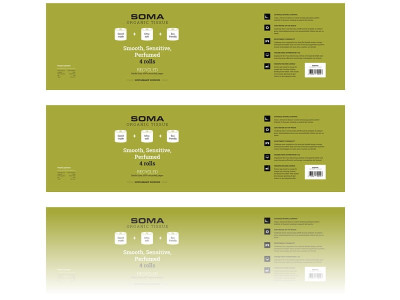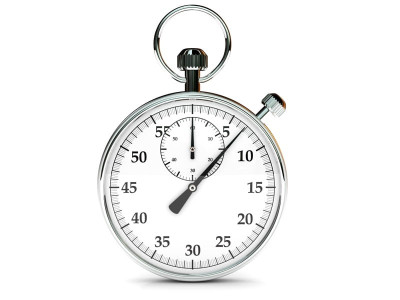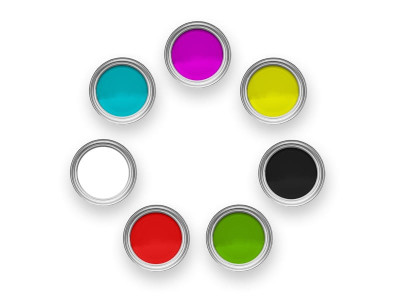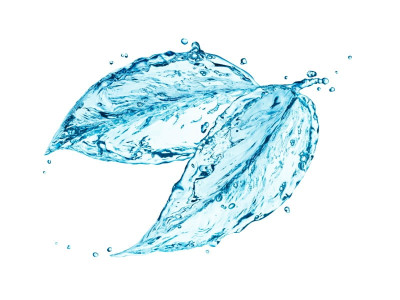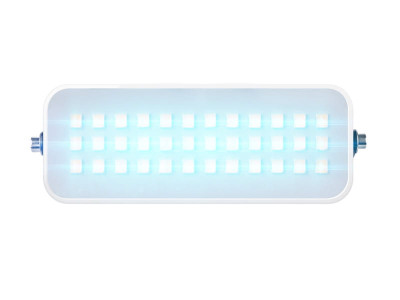15 February 2019
At Poly-Pak Industries, more can be done with less with a new SOMA press
As we all know, flexo has taken an enormous leap in quality and process efficiency over the past decade.
As we all know, flexo has taken an enormous leap in quality and process efficiency over the past decade. It’s based on many factors. Perhaps necessity has been the mother of invention. On one side we have flexo improving quality to offer an appealing, cost-effective alternative to gravure. On the other side we have flexo processes improving to offer cost-effective options to digital for shorter runs. Prepress technology has taken many steps forward. Flexo plates, led by HD technology, can reproduce art better. And, of course, flexo presses have become even more advanced.
As a manufacturer of flexo presses, we have noted a number of technologies that have improved print quality and reduced costs. And, we've seen how out customers have benefited from them. Some of these technologies are shared by other press manufacturers. Some, we feel, are unique to SOMA.
For example, controlling bounce on a press may not be a high-tech idea, but still requires a lot of engineering. It is, of course, critical because it maintains job consistency at high press speeds—particularly when using HD plates—during the press run. It can also assure that the press can hold stable, highlight dots with exceptional registration. This opens the door for new print process ideas, such as expanded gamut printing. With our SOMA Advanced Bounce Control System, decks with print and anilox cylinders can be designed with emphasis on rigidity, precision, reliability and single-hand operation of the printing deck support. For instance, a cast-iron side frame can ensure the rigid support of the drum and cast-iron housing.
A few other press technologies that can improve quality are:
- AC motors can provide fast acceleration/deceleration with low working tension—important for thin films.
- Printing cylinder mandrels made from composite material have excellent dynamic characteristics enabling quick and greater print quality along with the ability to reach 6% shorter print repeat lengths compared to standard jobs.
- Thermal stabilization of print and anilox cylinders is an important shield against heat expansion on sleeves, printing plates and consequently, on the printing dots. Some presses systems utilize technology based on of automatic temperature control according to frame temperature. This leads to the elimination of any dimensional changes of the printing sleeves as a result of thermal expansion from drive temperature loss. Another possible source of heat affecting the print sleeves is between the deck drying heads. A thermal stabilization system completely eliminates the influence of hot air to the printing plates. Thus, the sleeve diameter and print pressure remain constant, ensuring the same print quality.
Controlling costs, particularly for short runs
A factor affecting short runs is the ability to assure fast makereadies. The faster a press can get up and running, the sooner flexo can replace digital.
ARUN, developed by Allstein GmbH along with SOMA, is a unique off-line solution combining the functions of a plate mounter along with a fully automated device for plate topography and registration measurement. During the plate mounting process, the position of the plate in the sleeve is determined along with the topography of the plate, to set the impression. The data is stored in a chip that is embedded in the sleeve. When the sleeve is placed onto the press, the data is read and the registration and impression pressure are set automatically, without manual intervention. The result that jobs get up to speed faster and there is basically zero feet of set-up waste.
There are many other press features that can reduce makereadies and costs:
- High pigment inks, such as expensive spot colors, special effect and metallic formulations, are expensive and can significantly reduce profitability. Reducing ink volumes and residual waste allows printers to maintain profit margins while staying competitive. SOMA’s ink cartridge system can offer a reduction of 17.9% on ink costs.
- A good auto wash-up system removes residual ink from the complete inking system including doctor blade chambers, anilox sleeves, connecting hoses, pumping hoses and filter cage. It can take as little as three minutes, while minimizing ink waste.
- By maintaining a constant angle to the anilox sleeve surface throughout blade life, a well-designed doctor blade housing and self-adjusting chamber setting compensates for doctor blade wear.
- Some press ink systems in presses allow anilox sleeve changes and new printing job setups on unused printing decks during machine operation. This significantly reduces changeovers and make-ready times. You can wash up, add anilox sleeves, and fill ink containers on print units not in use during machine operation.
- A pneumatic device for easy print and anilox sleeve push off simplifies handling and access for the operator. This significantly accelerates job exchange and increases operator comfort.
- Motorized threading is an efficient way to help operators save time during job changes or web breaks.
- Automatic drum cleaning efficiently eliminates ink, dust and chemical agents that may affect print quality, and minimizes operator intervention. Usually, a cleaning unit operates during the machine run and does not require the machine to stop.
- Machine operating systems have become more powerful. Many of them ‘memorize’ jobs that were printed, so that settings can be automatically recalled for reprints. Parameters such as speed, acceleration, tension, impression, wash-up cycles, etc., can be stored and accessed via a touch screen.
All these features are beneficial, but seeing how it affects operations at a company is truly rewarding.
Poly-Pack Industries, Inc.: Putting new press technology into action
Poly-Pak Industries Inc., a Melville, N.Y.-based film extruder and converter, was founded in 1958 by Len Levy. The company’s three shifts of more than 300 employees typically makes and converts polyethylene and polypropylene films for bags, envelopes and roll stock. They provide a wide array of packaging products, including compact reusable polyester bags, paper bags, and promotional paper and specialty bag products for an extensive list of industries.
“My first experience was as a helper on a flexo press. We had five presses at the time,” remembers David Perelstein, printing manager. “The presses were all roll-to-roll—all synthetic and rubber plates. Doctor blades weren’t even being used at the time. It’s come a long way since then.”
The challenges of remaining competitive in today’s marketplace required Poly-Pak to keep up with current technology. “We’ve been looking for a long time for the right flexo press that could serve the needs of our customers and our company. It needed to be efficient and reliable, and to meet our customers’ demanding quality standards,” says Perelstein. “We decided to invest in an 8-color Premia flexo press from SOMA Engineering.” The eight-color press was installed in November, 2017, and has been printing almost everything that passes through the plant.
Three things that impressed Poly-Pak with their machine were changeover, print quality and speed. It is a gearless system with sleeves. “It takes us less than 30 minutes to get up and running, compared to 2-3 hours on our machines without sleeves,” notes Perelstein.
The installation went pretty easily because the new press was placed where Poly-Pak had previous located other presses. Once it was installed, service crews from the plate and ink vendors helped to fingerprint the press.
SOMA provided training for two weeks for all shifts—and returned a month later, for another week. The first training session was to teach them how to operate the press. The second training session was to optimize use—to help answer the questions they had gathered after having a few weeks of experience with the press.
Printing everything that runs through the plant
Poly-Pak’s new press has allowed Poly-Pak to print a variety of work, from narrow to wide, and from one to eight colors. They have been able to print plastic or paper, from the thinnest films to heavy-gauge material.
“The variety of products we have been able to print, from the graphics, to the process, to the surface to different substrates, is endless. We schedule them as efficiently as possible,” comments Perelstein. “The machine has also been extremely reliable and fast—it likes to print at least a thousand feet a minute. The automatic impressions technology offers us seamless, optimal printability and output, all day long.”
While the Premia flexo press does not have an ARUN system, it does have a semiautomatic system. The printing decks are moved to the drum until there is contact between the plate and substrate. The average waste is only about 60 feet—all done without printing. The ‘drag and drop’ registration system is used along with a video camera. The press prints enough material to locate microdots on the micro camera. A snap shot is taken, and the operator just points out where the microdots are. The press does the rest.
“While we have always been able to print with pretty respectable quality, until now it was achieved through an optical process during prepress mounting and the visual inspection of registration while the press is running,” adds Perelstein. “With our press, we have taken print to the next level. Registration is near-perfect on any job, whether we’re running two or eight colors. The press has been able to hold register on anything, on any thickness of substrate.”
The press has inspection areas to assure a color match, look for blemishes, and assure barcodes are printed correctly. “Some people take barcodes lightly, but if barcodes are not correct, the product can't be sold,” advises Perelstein.
Assuring jobs make money
Of course, any way the press can increase efficiencies and reduce costs will improve profitability.
Beyond the ease of makereadies, Poly-Pak’s machine is very operator-friendly. Everything is accessible from the ground. Neither staircases nor ladders are needed. There are no extra equipment cabinets, which means that the footprint is very manageable. Everything is also found directly on the press. The press also has a push/pull system for sleeves so the operator does not have to manually remove them.
Ink costs can be significant. Poly-Pak’s new press has small ink cartridges that can be used with very expensive inks. The cartridges are mounted on the deck chamber, so they are close to the press. There is less ink used—and wasted—in the ink feeding system.
Service: The importance of keeping the machine up and running
Anyone who makes an investment knows that the equipment or software system is only as good as the company that stands behind it.
“Service is critical because a machine that is down doesn’t produce any revenue,” explains Perelman. “The amount of cost and revenue that is lost every hour can be insurmountable. There’s such high volume in a plant like this that there’s no time to make it up. There’s not another shift or another day. So, quick response is crucial to get these machines back up and running.”
“As with any complicated, large machine during installation and commissioning, small bugs are going to occur,” comments Perelstien. “However, from the first day, the communication between Poly-Pak and SOMA has been seamless. Any time that any issue arose, someone based in the US always responded quickly. We’re very happy with their service department. They do a great job representing their company.”
It was also important to Poly-Pak that there was an Internet connection where the manufacturer could interact with the press to proactively anticipate problems, eliminating downtime. The press monitoring system can supervise press efficiency and energy consumption—and help management review press performance remotely from anywhere in the world.
A replacement for two or three presses
Poly-Pak is able to run their new press at almost maximum speed. “We have experienced a tremendous increase in output,” assesses Perelstein. “Our guess would be that the press is 2-3 times faster than any other machine we have in the building.”
Poly-Pak is currently running eight presses. They scrapped an older machine a while ago and, and since the installation of their new press, have removed another. “We have proven that at least two older presses can be replaced with this one machine. I think that after our learning process—as we become more familiar in the use of the press—there’s no reason that it couldn’t replace three machines,” determines Perelstein.
Poly-Pak’s press separates the printing unit and roll-handling zones. For example, if they determine that they need inline lamination, slitting, perforation, or upstream/downstream units, it can be done at minimal additional cost. This allows them to customize their press if they have specific needs in the future.
“Our new SOMA Premia press has been a sturdy, high-quality well-engineered machine. Its printing ability seems to be almost unlimited,” concludes Perelstein. “We expect many, many years of reliable service from this press, and believe that it will print as well ten years from now as it does today.”


